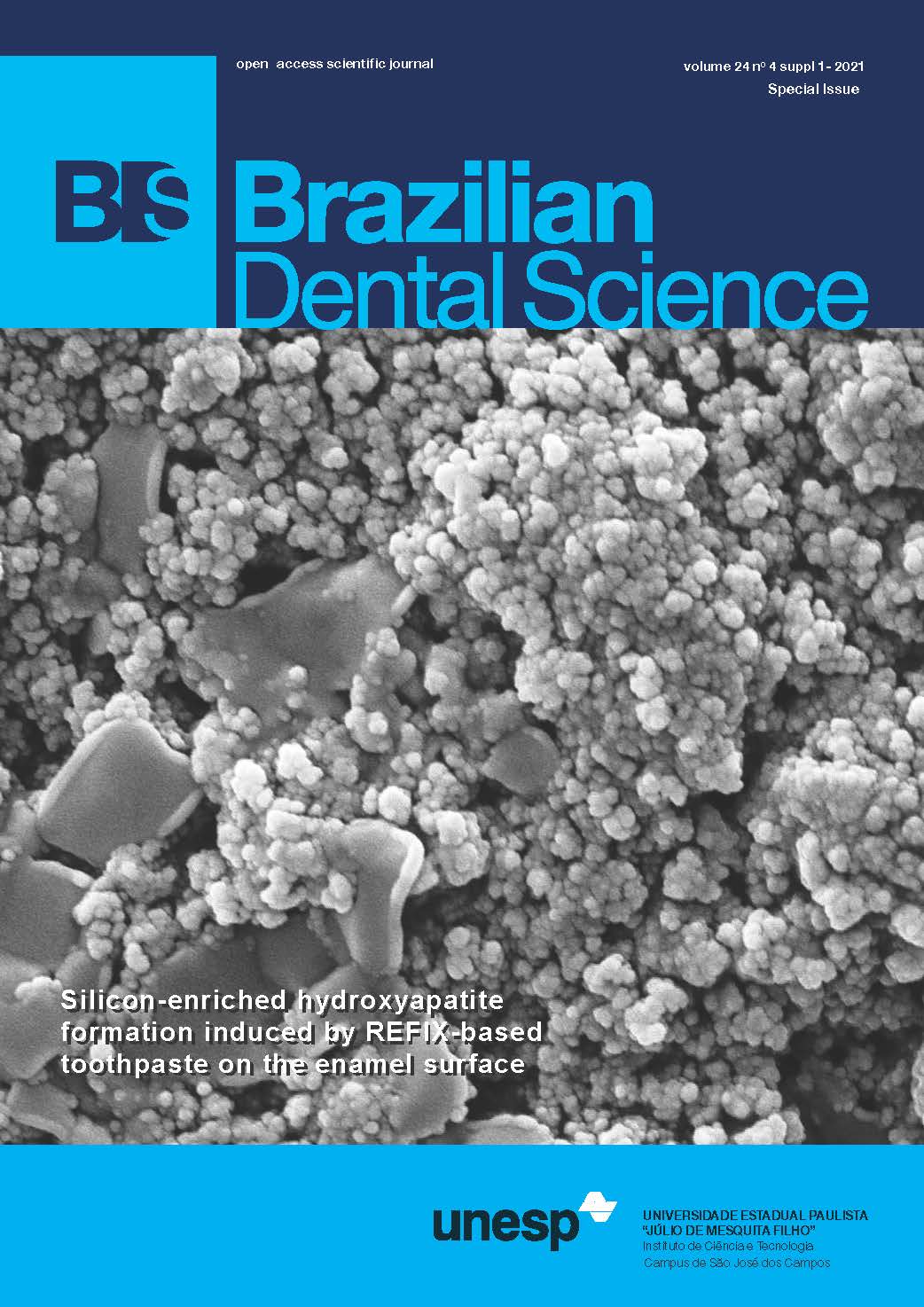Silicon-enriched hydroxyapatite formed induced by REFIX-based toothpaste on the enamel surface
DOI:
https://doi.org/10.4322/bds.2021.e3114Abstract
Objective: This in vitro study aimed at characterizing the mineral content and filler particle morphology of a fluoridated
toothpaste containing REFIX technology and the mineral content and the morphology of the enamel surface treated
with this product. Material and Methods: Bovine enamel blocks (n=5) were obtained (4×4×6 mm), demineralized
(artificial caries lesion), and treated (pH cycling and brushing with the toothpaste). During the pH cycling, which lasted
for 7 days (demineralization and remineralization took 6 h and 18 h, respectively), the enamel was brushed for 5 min
using an electric toothbrush before being immersed in a remineralization solution. We evaluated the micromorphology
and elemental levels (wt%) of ions present in the toothpaste and on the layer formed over the enamel following the
treatment. The surface morphology was assessed using scanning electron microscopy (SEM). The elemental analyses
were performed using an energy-dispersive X-ray spectrometer (EDS). Results: Scanning electron micrographs of the
toothpaste demonstrated a uniform size distribution of regular-shaped fillers sparsely organized in nanoclusters. Elemental analysis of the toothpaste’s formulation demonstrated the presence of Si (silicon), Na (sodium), P (phosphorus), and F (fluorine), among others. We also detected a mineral layer that had formed on the treated enamel surface; the layer had a consistent uniform thickness of ~14 µm. Conclusion: Based on the results, it can be stated that REFIX technology modifies the surface and subsurface of the enamel structure, forming a Si-rich mineral layer.
KEYWORDS
Dental enamel; Dentifrice; Scanning electron microscopy; Tooth remineralization.
Downloads
Downloads
Published
How to Cite
Issue
Section
License
Brazilian Dental Science uses the Creative Commons (CC-BY 4.0) license, thus preserving the integrity of articles in an open access environment. The journal allows the author to retain publishing rights without restrictions.
=================




























